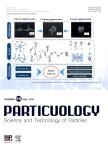Preparation of microparticles and nanoparticles using membrane-assisted dispersion,micromixing,and evaporation processes
作者机构:Chemical Engineering DepartmentLoughborough UniversityLoughboroughLeicestershire LE113TUUnited Kingdom
出 版 物:《Particuology》 (颗粒学报(英文版))
年 卷 期:2024年第84卷第1期
页 面:30-44页
核心收录:
学科分类:0710[理学-生物学] 07[理学] 070205[理学-凝聚态物理] 0805[工学-材料科学与工程(可授工学、理学学位)] 0703[理学-化学] 0702[理学-物理学]
主 题:Nanoparticles Microparticles Nanoemulsions Microemulsions Microporous membrane Crystallisation Flash nanoprecipitation Emulsification Zero liquid discharge
摘 要:Synthetic microporous membranes are increasingly used for energy-efficient and controlled production of micro-and nanoparticles and micro-and nanoemulsions with tuneable morphology and physico-chemical properties through various micromixing,emulsification,and evaporation processes.In emul-sification processes,the membrane pores are used for dispersed phase injection and size-controlled generation of droplets and droplet-templated particles.In micromixing processes,membrane is utilised as a micromixer for mixing two miscible liquids,usually solvent and antisolvent-rich solutions,which leads to the creation of supersaturation and subsequent nanoprecipitation or crystallisation.In mem-brane evaporation processes,membrane is used to prevent phase dispersion while allowing efficient molecular diffusion of solvent and/or antisolvent vapour through gas-filled pores.Membrane dispersion processes can be operated continuously by decoupling shear stress on the membrane surface from cross flow using tube insets,flow pulsations,swirling flow,membrane oscillations or membrane rotations.Droplet generation and solidification can be performed continuously in a single pass by connecting membrane module with a downstream reactor.Membrane dispersion processes can be used for pro-duction of nanoparticles such as nanovesicles(liposomes,micelles,ethosomes,and niosomes),nanogels,polymeric,lipid and metallic nanoparticles,and nanocrystals.The main advantages of membrane-assisted particle generation are in low energy consumption,controlled geometry and hydrodynamic conditions at the microscale level,flexible throughput due to modular and scalable design of membrane devices,and a wide choice of available microporous membranes with various wall porosities,wetta-bilities,pore sizes,and pore morphologies to suit different applications.



